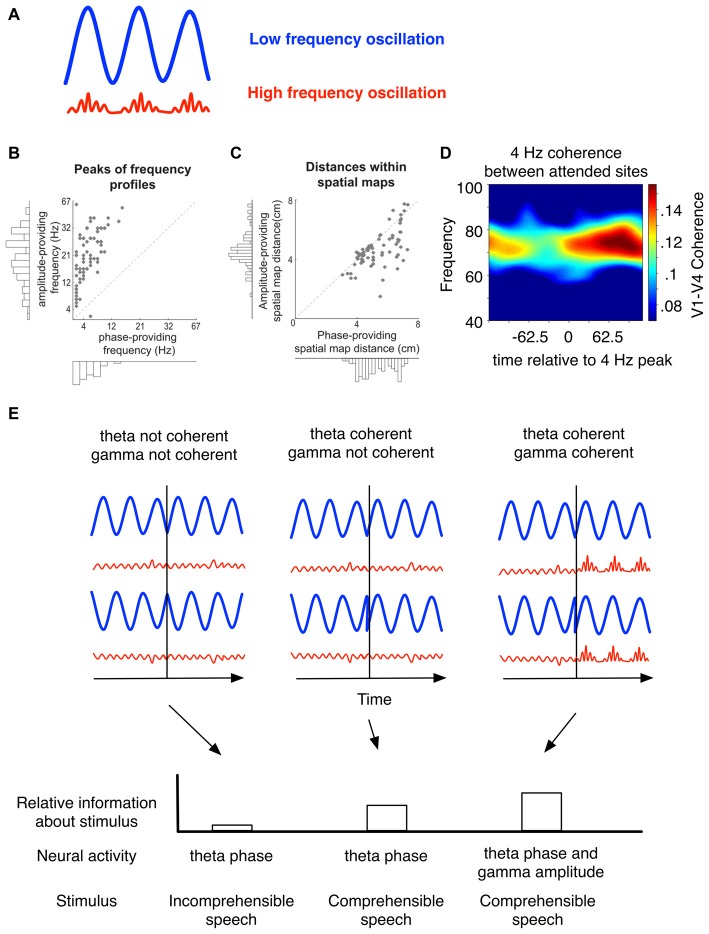Figure 3.
Nested oscillatory interactions route local and long-range activity to optimize stimulus representation. (A) The phase of slower (e.g., theta) oscillations affect processing facilitated by faster oscillations. Theta phase can organize gamma bursts, evident as a modulation of gamma amplitude. (B,C) Each data point is obtained by (1) extracting unique CFC patterns based on anatomical location and frequency content; and (2) from these patterns of location and frequency content, selecting LFPs with statistically significant coupling (for details, see van der Meij et al., 2012). (B) The frequency peak was calculated from each unique CFC pattern as the peak of the spectral profile of coupled phase or amplitude-providing LFPs. Phase providing LFPs had a spectral peak that was characteristically lower than amplitude providing LFPs. (C) In the spatial map, the mean Euclidian distance between LFPs is generally greater for phase providing rather than amplitude providing LFPs. This implies that during cross frequency coordination, low frequency activity has an influence over a greater space than high frequency activity. (D) In macaques, coherence in the gamma band between V1–V4 increased for attended but not unattended stimuli (Bosman et al., 2012). Gamma coherence between distant sites was modulated as a function of theta phase (adapted from Bosman et al., 2012). (E) (Top panel) In this schematic, phase resetting in low or high frequency sources (or both) can facilitate stimulus encoding. (Bottom panel) While low frequency oscillations may emerge to support a specific function, high-frequency activity can significantly contribute to internal stimulus representation. For example, during comprehensible but not incomprehensible speech, theta phase is informative of the speech envelope. However, theta-modulated gamma amplitude significantly reduces uncertainty about the stimulus (see Gross et al., 2013). Phase-modulated gamma activity also contributes to attention switching in macaques (Voloh et al., 2015).

